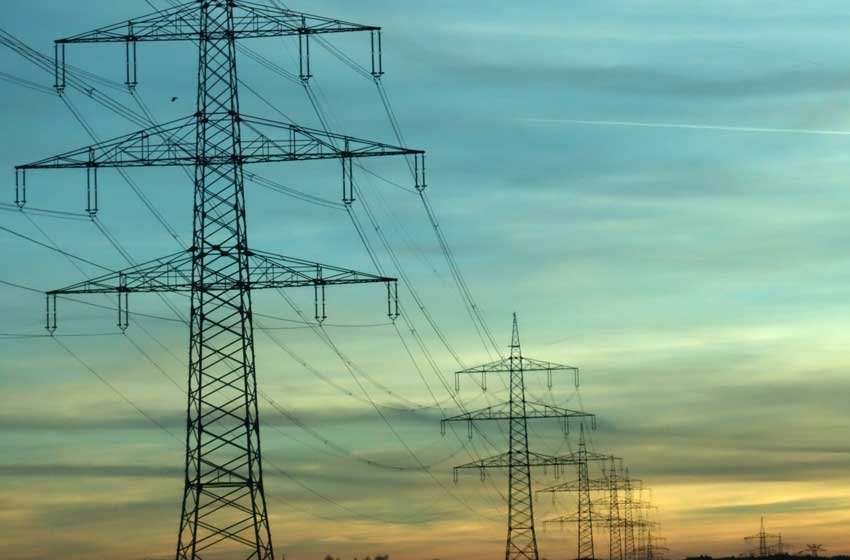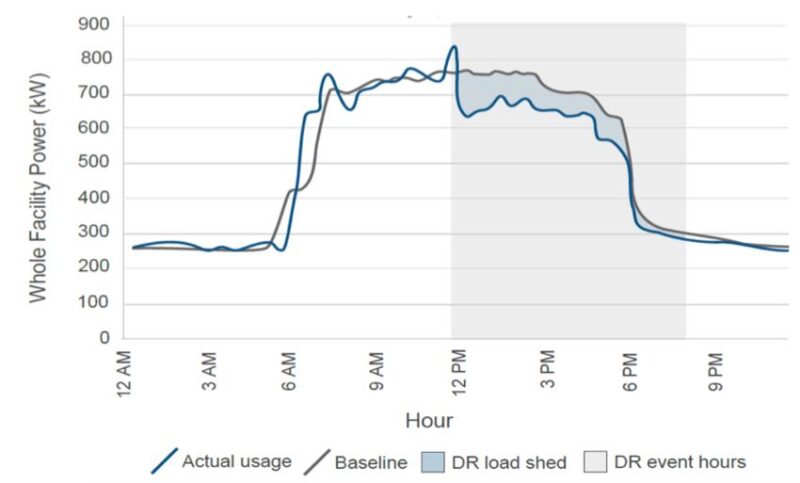
In recent years, Demand Response programs have gained traction as a key tool in managing electricity demand and reducing strain on the power grid. These programs let electricity consumers voluntarily reduce their electricity usage during times of high demand. That lets the power companies conserve and distribute power during hot summer afternoons when air conditioning use peaks.
What is Demand Response?
Demand response is a short-term disruption in consumer electricity usage initiated by the local power company. This change is either mandatory (through legislation) or voluntary. The latter happens when government creates an incentivized agreement between the consumer and the regulating body or energy provider.
For the most part, Demand Response programs in the United States work through a voluntary sign-up system. However, some states have made it mandatory on certain new appliances as of 2023. In particular, Oregon and Washington State mandate that any new hot water heaters include this technology.
What are the Benefits of a Demand Response Program?
Effective demand response programs provide various economic and environmental benefits, including:
- Avoiding, or reducing the need for, the construction of new power plants
- Potentially lowering energy prices
- Enhancing grid reliability
- Preventing blackouts (related to the above)
- Reducing power use from auxiliary fossil fuels in order to meet peak energy demands
By reducing demand during peak times, utilities can avoid having to build expensive new power plants and transmission lines to meet the highest levels of demand. This in turn can lead to lower electricity bills for consumers. Utilities can avoid passing on the costs of new infrastructure to customers.
In addition, demand response programs can help to reduce greenhouse gas emissions. The do this by letting utilities rely more heavily on renewable energy sources such as wind and solar. When demand is high, power companies have to turn to fossil-fuel power plants to meet the extra demand. This invariably leads to increased emissions. By reducing demand during these peak times, utilities reduce fossil fuel usage. These facilities can continue relying on a higher percentage of renewable energy sources for longer periods of time.
Does Demand Response Work?
One recent example of the success of these programs comes from California. There, utilities have been using demand response programs to manage electricity demand during heat waves. During a particularly severe heat wave in August of 2020, utilities were able to reduce peak demand by nearly 4,000 megawatts through the use of demand response programs.
Basically, they turned off people’s air conditioners during a heat wave. Technically, we suppose that was a success.
This certainly helped to avoid blackouts. It also prevented the need for expensive new infrastructure—for now at least. It did not, however, solve the primary issue of actually meeting the desired demand.

How Does DR Function?
Appliances and products with built-in Demand Response support include a CTA-2045 port. The CTA-2045 port adapter and Universal Communication Module (UCM) communicate power grid conditions to your water heater so it can respond intelligently. If these modules are installed and your water heater’s Grid Enabled feature is turned on, your water heater can help support the power grid by turning itself off during peak periods of demand.
Devices that Support Demand Response CTA 2045 Modules
The following types of equipment, depending upon the manufacturer, can support Demand Response via CTA 2045 adapters and UCM modules:
- Hot water heaters
- Packaged terminal air conditioner (PTAC) units
- Heat Pump HVAC units
- Mini split AC units
- Pool pumps
- EV chargers
- Smart thermostats
Which States Have Implemented Demand Response Legislation?
Several jurisdictions in the United States have passed laws or regulations related to demand response programs. Some examples include:
Western USA
- California: California has been a leader in demand response. Its state Public Utilities Commission (PUC) adopted regulations that require utilities to offer demand response programs to their customers. California also has a specific program called the Demand Response Auction Mechanism (DRAM) that allows utilities to procure resources. In 2021, the California Public Utilities Commission (CPUC) issued a set of proposals to address the risk of electricity outages during extreme heat events similar to the heat waves of 2020 and 2021. The proposals create new programs and modify current programs to reduce energy demand and increase energy supply during critical hours of the day.
- Oregon: On September 25, 2021, Oregon passed House Bill 2062. It stated that electric storage water heaters manufactured on or after January 1, 2022, must have a modular demand response communications port compliant with the March 2018 version of the ANSI/CTA-2045-A communication interface standard or a standard determined by the Director of the State Department of Energy to be equivalent; and the March 2018 version of the ANSI/CTA-2045-A application layer requirements.
- Washington: On September 25, 2021, the state of Washington passed RCW (Revised Code of Washington) 19.260.080. It stated that an electric storage water heater, if manufactured on or after January 1, 2021, may not be installed, sold, or offered for sale, lease, or rent in the state unless it has a modular demand response communications port compliant with the March 2018 version of the ANSI/CTA–2045-A communication interface standard, or equivalent and the March 2018 version of the ANSI/CTA-2045-A application layer requirements.
Central USA
- Illinois: The state of Illinois has passed laws that require power companies to offer demand response programs to their customers. This includes the Energy Efficiency Portfolio Standard and the Smart Grid Advanced Metering Infrastructure Deployment Act.
- Texas: The Public Utility Commission of Texas has established a demand response program, which requires utilities to offer financial incentives to customers who reduce their electricity usage during times of high usage. The program includes provisions for automated energy reduction technologies and other measures to improve these capabilities.
Eastern USA
- Maryland: The Maryland Public Service Commission has established a demand response program. It requires utilities to offer financial incentives to customers who reduce their electricity usage during times of high energy use. The program includes provisions for advanced metering infrastructure and other technologies to improve demand response capabilities.
- Massachusetts: The Massachusetts Department of Public Utilities has established a demand response program. It requires power companies to offer financial incentives to customers who reduce their electricity usage at peak times. The program includes rules for advanced metering infrastructure and other technologies to improve demand response capabilities.
- New York: In 2014, New York passed the Reforming the Energy Vision (REV) plan. This includes provisions for demand response programs as part of its efforts to create a more sustainable and resilient energy system. All seven power providers for New York offer some form of incentive at this time. New York State aims to reach 1,500 MW of energy storage by 2025 and 3,000 MW by 2030. In addition to providing roughly $3 billion in gross benefits.
These are just a few examples of jurisdictions that have established demand response programs.
Challenges Ahead for Demand Response Programs
Despite the benefits of demand response programs, there are still challenges to their widespread adoption. One challenge is the need for reliable communication between utilities and consumers. In order for these programs to work effectively, power companies need to be able to quickly and reliably communicate with consumers. They also need to provide incentives for reducing electricity usage. This can be difficult in areas where internet connectivity is poor or where there is a lack of communication infrastructure.
Another challenge is the need to educate consumers about the benefits of demand response programs. Many people may be hesitant to reduce their electricity usage during peak times, especially if they are not familiar with the potential cost savings and environmental benefits. Many consumers also want “override” capabilities so they can “deny” the power shut-off command.
Final Thoughts
Overall, demand response programs have the potential to be a key tool in managing electricity usage and reducing strain on the power grid. With careful planning and effective communication, these programs could play an important role in creating a more sustainable and resilient energy system.






